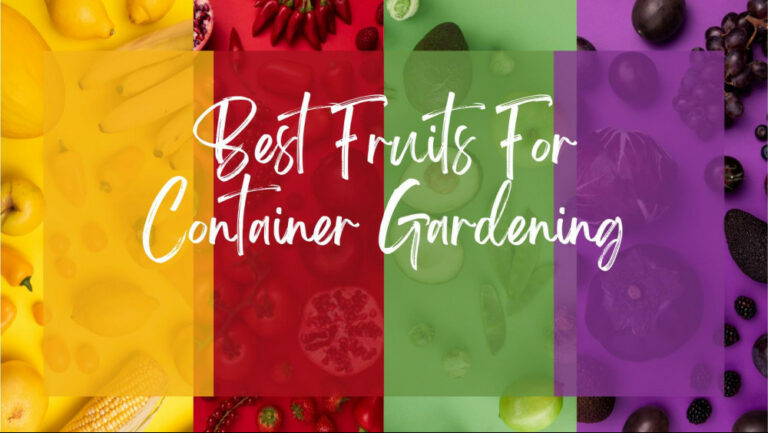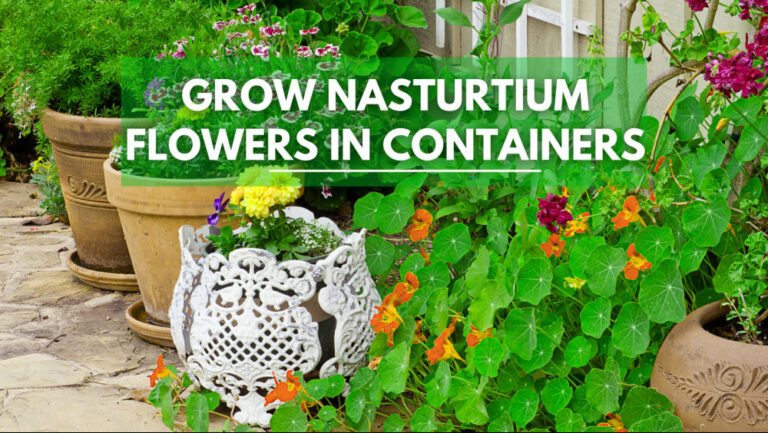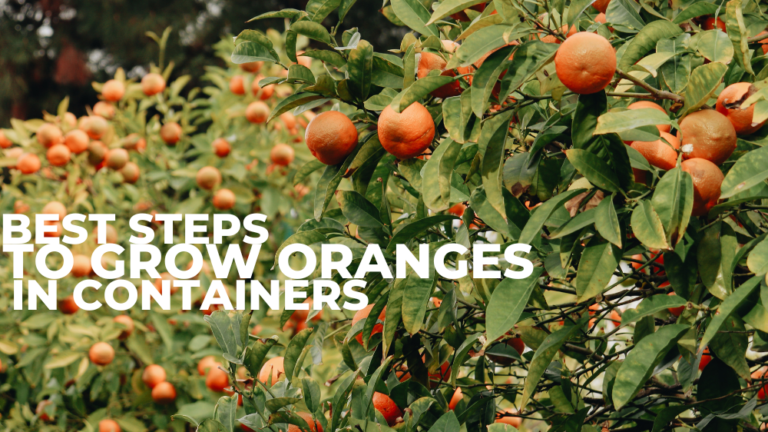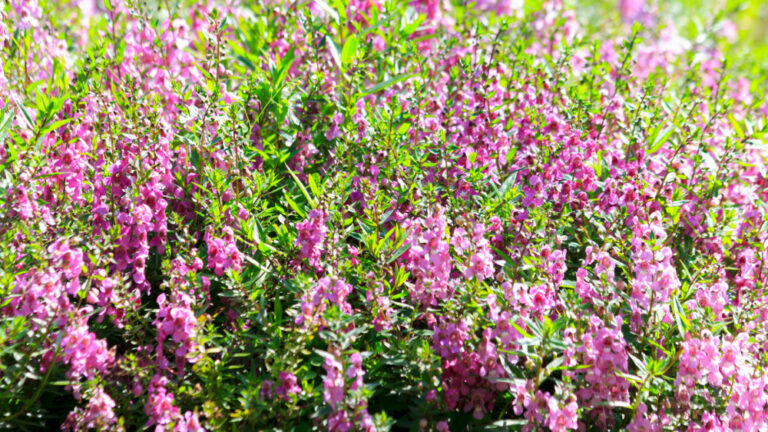Best Steps To Grow Monarda In Containers
Best Steps To Grow Monarda In Containers
Monarda, often known as bee balm, belongs to the mint family and is a well-liked plant for luring hummingbirds and butterflies.
These growing suggestions will aid the establishment of these well-liked plants in a cottage-style garden.
Although it doesn't typically grow as aggressively as other mint family members, bee balm grows freely so it might need some taming after a few years.
The blog will help you to grow Monard in containers ideally.
History & Origin Of Monarda
Monarda, a genus of 12 North American plants in the Lamiales (mint family; Lamiaceae) order, is known as bergamot, horsemint, and bee balm.
The tubular, two-lipped flowers can be red, pink, lavender, yellow, or white. They are grouped and encircled by bracts that resemble leaves. M. fistulosa, which reaches a height of 1.5 m (5 ft), smells like mint.
The Oswego tea (M. didyma), which is shorter and has scarlet blooms, has a stronger aroma and is extensively grown worldwide despite being native to eastern North America.
Monarda didyma, also known as bee balm, Oswego tea, and bergamot, is a native of eastern North America.
From Maine to Minnesota, south to Missouri and Georgia, it can be found in bottomlands, thickets, damp woodlands, and along stream banks.
It is a member of the mint family that tends to be coarse and clump-forming. It has tubular, two-lipped, bright, scarlet-red blooms crammed into terminal flowerheads that are dense, spherical, and up to 3″ across. Please give them the appearance of messy mopheads.
Flowerheads bloom on 2-4′ tall square stems covered in opposite, 3-6″ long, ovate to oblong-lanceolate, medium to deep green leaves with serrated sides.
When leaves are damaged or crushed, a minty scent is released. An impressive whorl of beautiful, crimson-tinged, leafy bracts supports each flowerhead.
The long summer bloom lasts from early to late summer for roughly 8 weeks. After bloom, plant foliage deteriorates, especially if it is mildewed. It attracts hummingbirds, butterflies, and bees, mainly gathered in large groups.
Bee balm (Monarda spp. ), a native of the eastern United States and southeastern Canada, was valued in alternative medicine by Native Americans for its therapeutic properties.
One of its names, bee balm, came from a well-known salve made from its resin and used to relieve bee stings.
Oswego tea, another of its names, is derived from the Oswego Native Americans who once lived in what is now upstate New York's Oswego County.
The Oswego people used the bee balm plant's leaves to make tea, which they demonstrated to the European immigrants.
People started consuming Oswego tea as a locally produced, definitely non-British alternative after the Boston Tea Party when American rebels threw tea into Boston Harbor to protest the British tea tax.
Even though they didn't want to pay taxes, they couldn't just stop drinking tea, could they?
Types Of Monarda
Grow various bee balm flowers to draw bees, butterflies, and hummingbirds to your gardens and lawns while introducing a range of hues. To grow Monard in containers, you should know about the best varieties.
1. Monarda Bartletti
This species, lavender in hue, can be found in the Mexican state of Tamaulipas. They stand around 4 inches tall and have a little scent.
Since Monardo bartletti has a built-in resistance to mildew, it is simpler to cultivate for extended periods. Bees are typically drawn to flowers with vigour.
2. Monarda' Balmy Lilac' (Bee Balm)
Beautiful perennial with lovely lilac flowers, the Monarda Balmy Lilac variety. From late April through the end of summer, it is in flower.
The hummingbirds and butterflies love this type. It thrives on moist yet well-drained soil, with either full sun or partial shade. Grow this kind in a tiny garden or spruce up your borders.
3. Eastern Bee Balm
Monarda bradburian flower does best on soil with a medium moisture level. The petals of the blooms are typically speckled and pale pink or white.
Their blossoms and their scented, oblong leaves persist all summer long. It works best in casual plantings.
4. Lemon Bee Balm
The lemon mint plant, Monarda citriodora, is indigenous to southern Mexico and the northern United States.
It is a hardy plant that usually grows in rocky prairies and dry pastures from South Carolina to the west of Missouri. It blooms annually or twice a year.
These blooms stand out from other species thanks to their long, tubular form. Whorls use to shape the upper stem.
5. Scarlet Bee Balm
These are the wild Bee Balm blooms that are most frequently encountered. Their name suggests they are red, drawing many colourful species to their scented nectar.
Due to its calming scent, the plant is often used in teas and as an essential oil due to its calming scent. Since the stamens usually develop in pairs, the species is known as didyma, which means twins.
If you are accustomed to hiking in the mountains, you might find this wildflower in groups in shaded woods next to streams.
It grows widely in the Appalachians and eastern Canada and is known as fragrant balm and mountain mint.
6. Wild Bergamot
These blooms, which also go by the names mint leaf bee balm, horse-mint, and purple bee balm, are widely distributed over most of the United States and Canada, where they naturally exist.
Alternatively, they are manually cultivated in China and other places using hybrid cultivars.
Fistulosa has lovely lavender (or pink) leaves prone to mildew if the herb isn't kept in a very sunny, dry location. It is drought-resistant but needs dry, sunny conditions to thrive.
Oswego tea is occasionally brewed from the plant since it was once thought to be a panacea for colds and other disorders.
The plant's leaves are palatable, both dried and cooked. As a salad, garnish is another application in cuisine.
Grow Monarda In Containers
Choose The Right Container
Instead of using garden soil, which can easily compact, container plants perform better when planted in potting soil.
Weeds, bugs, and other creatures you don't want in your containers are frequently present in garden soil. To find a mix that will hold water and nutrients, look for one that is fluffy, light, and drains quickly.
Soil To Grow Monard In Containers
The monarda plant thrives in well-drained, organically rich soil. Lighter soil is acceptable for bee balm, but richer soil will favour taller, more robust individuals.
Soggy conditions and soils that have been allowed to dry out for an extended period are unacceptable.
Because monarda prefers nutrient-rich, well-drained soil, it is best to add a lot of compost when planting.
In a location with full sun and good, well-drained soil with a pH of 6.0 to 6.7, place Bee balm plants 18 to 24 inches apart.
Add several inches of rich organic matter or old compost to the native soil to improve it. Although it can survive a dry spell, for optimal results, water anytime the top inch of soil appears parched.
Sowing Monarda Seeds Indoors
Before planting, you should buy starting pots and a thick, fertile potting mix. You can use peat pots to shield your roots from transplant shock.
Six to eight weeks before the last frost, sow four to five Monarda seeds in each container. We advise against burying Monarda seeds with topsoil since they require direct lighting to germinate effectively.
Spritz the seeds with water from a spray bottle daily to water them. As previously said, temperatures must be greater than 70°F.
Therefore, you might consider putting the pots on top of the refrigerator at night to keep them warm. You may cover with cling wrap as a clever way to keep moisture.
When the weather is warm, and there is no longer any risk of a frost, transplant Monarda plants into the garden.
If you use peat pots, you can put the entire pot into the ground because they are from natural peat moss. The plant roots will pierce the pots when they finally disintegrate over time.
Germination
Monarda seeds typically germinate 14 to 28 days later after seeding. TMostplants mature at 2 to 4 feet, although other varieties only attain heights of 1 to 2 feet.
For specific height information on each type you're trying to grow, consult the seed packet. The plants can be placed between 12 and 18 inches apart and eventually spread to around 1 to 2 feet.
Though officially a member of the mint family, bee balm plants are not an invasive species like peppermint or spearmint.
Propagation From Seeds
Seed germination can take a very long time; the average time is between 10 and 40 days. Before planting, seeds must be stratified.
A softly focused light green background surrounds a close-up of a light purple flower with long, thin petals that taper at the ends.
Below the blossoms are purple and green foliage. To accomplish this, put seeds in a plastic bag filled with sand to retain moisture, and place the bag in your refrigerator for at least a month.
Early in the spring, a few weeks before the last frost, remove the Monarda seeds from the refrigerator and scatter them throughout the garden.
Seeds need sunshine to germinate, so amend the soil with some compost.
Propagation From Cuttings
Late spring is the best time to take the new Monarda plant development cuttings. Just below a set of plant leaves, cut tips no longer than 6 inches.
Lower plant leaves should be removed, and the cutting should be dipped in rooting hormone. Place the cuttings in a tiny container that is 2 inches deep and contains perlite, vermiculite, peat moss, or a combination of these.
Put the cuttings in a plastic bag after giving them good water. Remove the bag and re-pot the Bee balm cuttings in potting soil once they have taken root.
Until you are ready to transplant them outside, place them in a sunny window and keep the soil barely moist.
Propagation From Division
The easiest way to plant bee balm is probably by division. Any plants you want to divide in the spring should be dug up carefully.
Remove any loose soil by gently shaking it off. Use pruning shears to cut through any thicker roots.
Carefully separate the portions, checking that each split has enough roots to re-grow—at least a few inches of root on each piece. Replant in garden beds or pots after trimming any broken or damaged stems.
Grow Monarda From Seed
However, because most bee balms bought in nurseries are hybrids, their seeds frequently do not “come true” to the parent plant.
Bee balms can be grown from seeds collected from dried flower heads in the fall. This method can increase the size of pure species plants, and commercial seeds are available. Retail sources are typically offered for sale as combinations of various colours.
Use tiny pots or seedling trays filled with commercial potting soil to start the seeds indoors about eight weeks before the last frost.
Put two, four or five seeds in each seedling cell or container. The seeds need light to grow, so spread them out on the surface and cover them with a thin layer of potting soil.
Put the trays or pots under the lights and use a spray bottle to water them. Keep the seeds above 55 °F to prevent germination.
When the weather has warmed and all threat of frost has passed, the seedlings can be placed directly into the garden because their root systems will have developed within a few weeks.
Sunlight
Monarda can tolerate little shade but flourishes best with at least six hours of full sun each day.
The plant might become leggy from too much shade, and it can frequently have fewer or less vibrant blooms.
However, in hotter, drier climes, bee balm plants will thrive when protected from the afternoon sun.
Watering Requirements
Monarda is a plant that appreciates dampness and does best in constantly moist soil.
As a result, you should aim to water the plant at least once a week, depending on your region and climate, and never let the soil become dry.
For the plant to develop a strong root system during its first year, it is especially crucial to maintain an appropriate watering cadence.
Bee balm can be grown using the standard gardening technique of providing 1 inch of water per week.
Temperature & Humidity
Bee balm is not particularly picky about temperature or humidity conditions as long as it is planted within the suitable USDA zone range (zones 4 to 9).
It enjoys moderately dry climatic conditions because humidity can lead to mildew and rust issues. To lower humidity, provide good air circulation and water near the ground.
Fertilizer
Monarda plants can benefit from an extra nutrition boost by being fertilized with a balanced 10-10-10 fertilizer every spring, even if it is not necessary for the plant's survival.
It is best to prevent overfertilizing because it can reduce flowering. Follow the directions on the product packaging for how much to use.
Pruning
Monarda fans sometimes appreciate the plant's rustic, wild appearance, but it should still be cut back occasionally.
As soon as the blooms bloom, deadhead them to extend the season's blossoming and stop them from self-seeding (unless desired).
Cut the stems back to the ground if the plants are severely damaged by powdery mildew late in the growing season and become ugly.
The plant's health won't be affected and will grow back fully formed the following spring.
Pests & Diseases Of Monarda
Although several small pests can harm monarda, infestations are rarely severe, presumably because this member of the mint family naturally repels insects with its aroma.
Powdery mildew, a fungus resulting in a fine white or gray deposit on leaves, is the worst issue with bee balm. Powdery mildew can harm various plants, but bee balm is more severely afflicted than most.
This fungus thrives best in an environment with damp nights and coolish days. After enjoying the flowers from your plants for a while, if your plants get powdery mildew, it may be necessary to cut them back to the ground and properly dispose of the cut growth.
If cutting the plants down is not an option, and your bee balm plants develop powdery mildew too early, spraying them with a commercial or homemade fungicide is another option.
Mildew will require multiple applications, starting early, to control entirely.
Conclusion
Growing bee balm has several benefits. It's a perennial in USDA hardiness zones 3-9. Additionally, it's a simple plant to grow.
Summer and early fall will see blooming on Monarda. It performs exceptionally well as a mid-border plant and adds warm colour to your garden.
It can be planted in front of daylilies echinacea or grown with other perennials that enjoy the sun, such as phlox.
Numerous varieties of monarda also work well in a vegetable or herb garden. Bee balm leaves have a strong aroma and release it when they are stroked or exposed to sun heat.
Due to its easy-to-grow nature and fragrant leaves, monarda is a member of the mint family.
I trust you enjoyed this article on the Best Steps To Grow Monarda In Containers. Please stay tuned for more blog posts to come shortly. Take care!
JeannetteZ
>>>Please click here to read my all-inclusive article about Container Gardening<<<
>>>Are you interested in homegrown herbs and medicine? Please click here to find out more about it!<<<
Your Opinion Is Important To Me
Thoughts? Ideas? Questions? I would love to hear from you. Please leave me your questions, experience, and remarks about this article about the Best Steps To Grow Monarda In Containers in the comments section below. You can also reach me by email at Jeannette@Close-To-Nature.org.
Disclosure
This post may contain affiliate links. As an Amazon Associate and other affiliate programs, I earn from qualifying purchases at no extra cost to you. Read my full affiliate disclosure.
You might also enjoy these blog posts:
Best Steps To Grow Lollipops In Containers
What Is The Difference Between Stress And Depression
Best Steps To Grow Verbena In Containers
Best Steps To Grow Cacao Plants In Containers






















